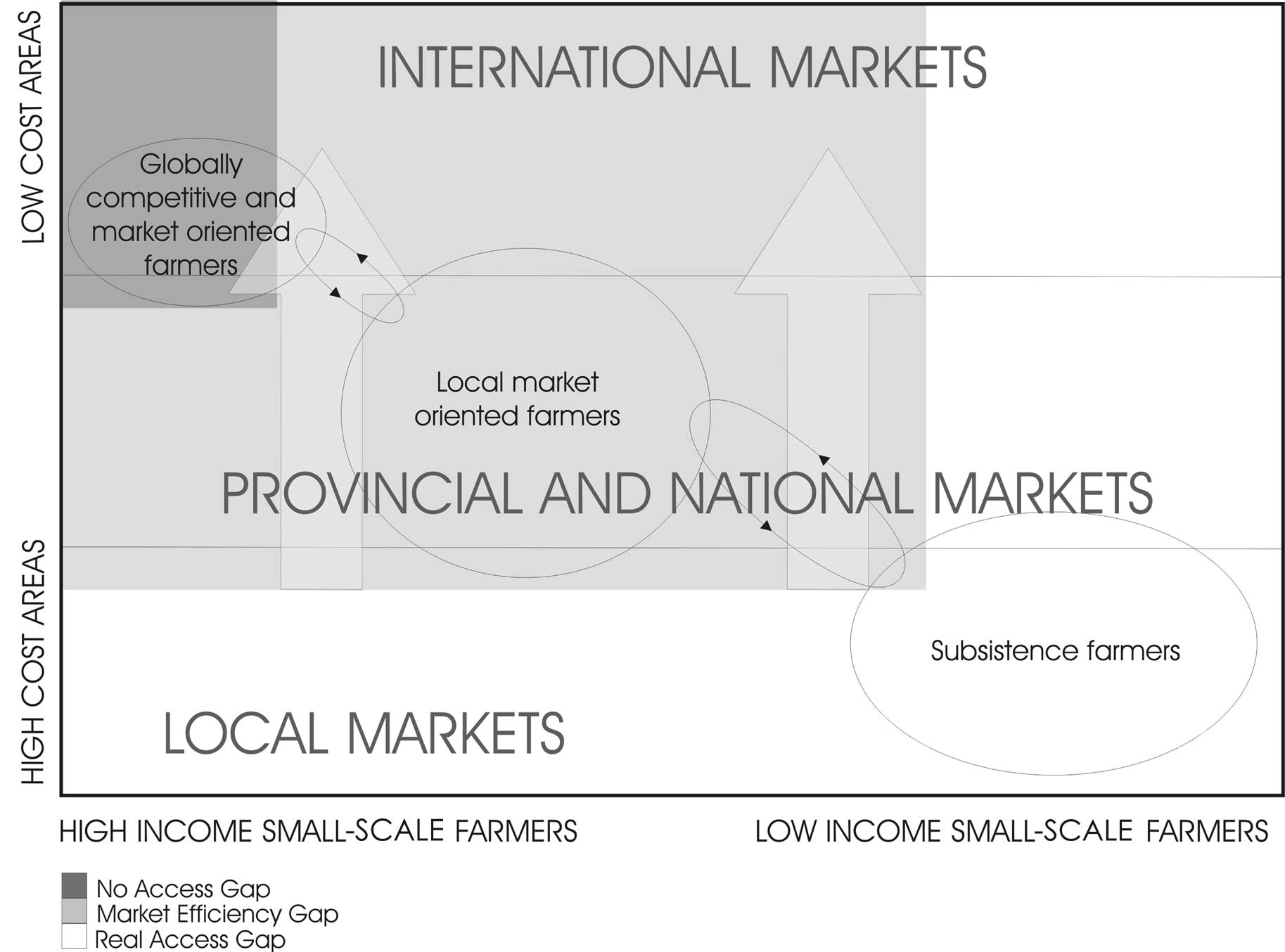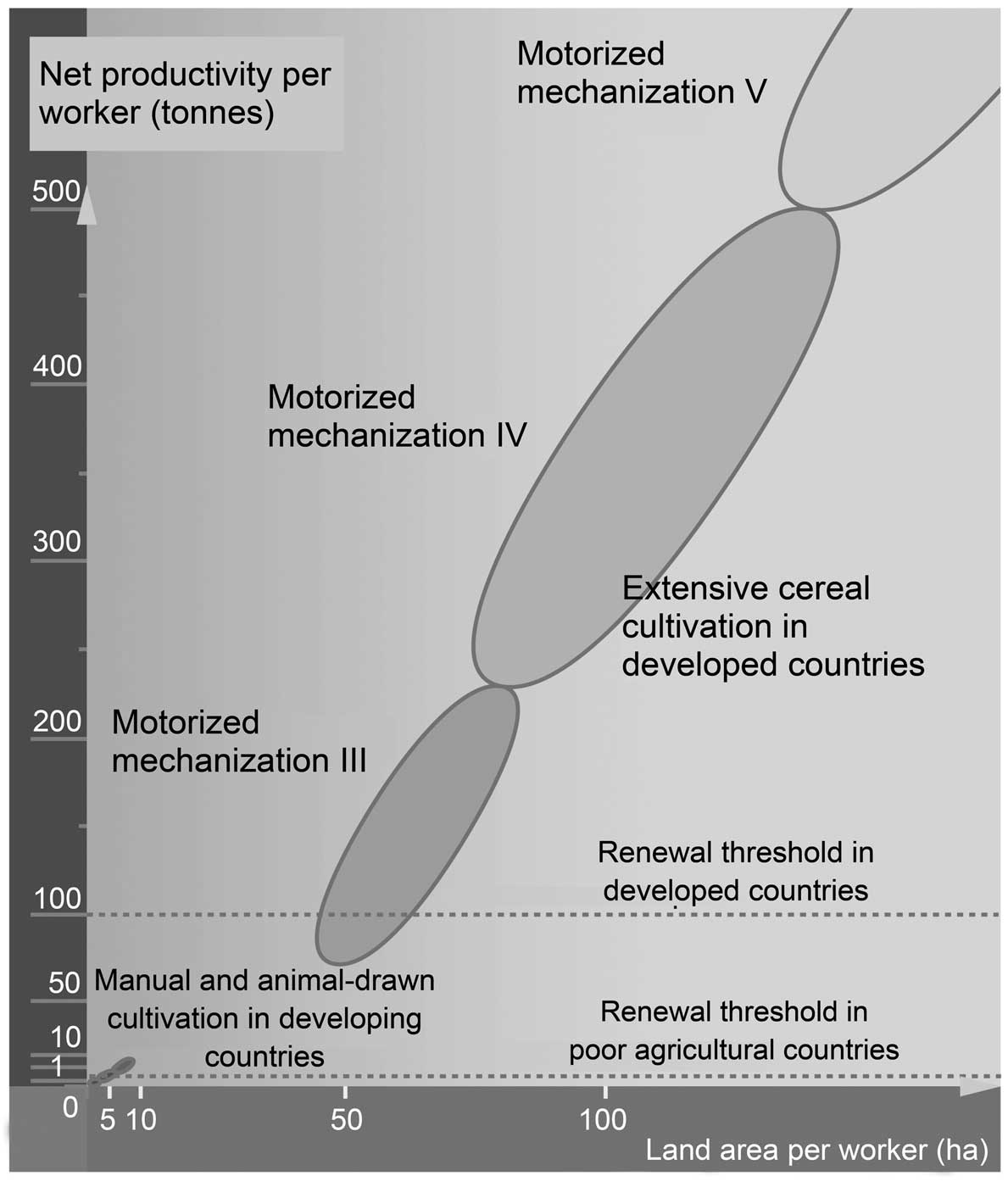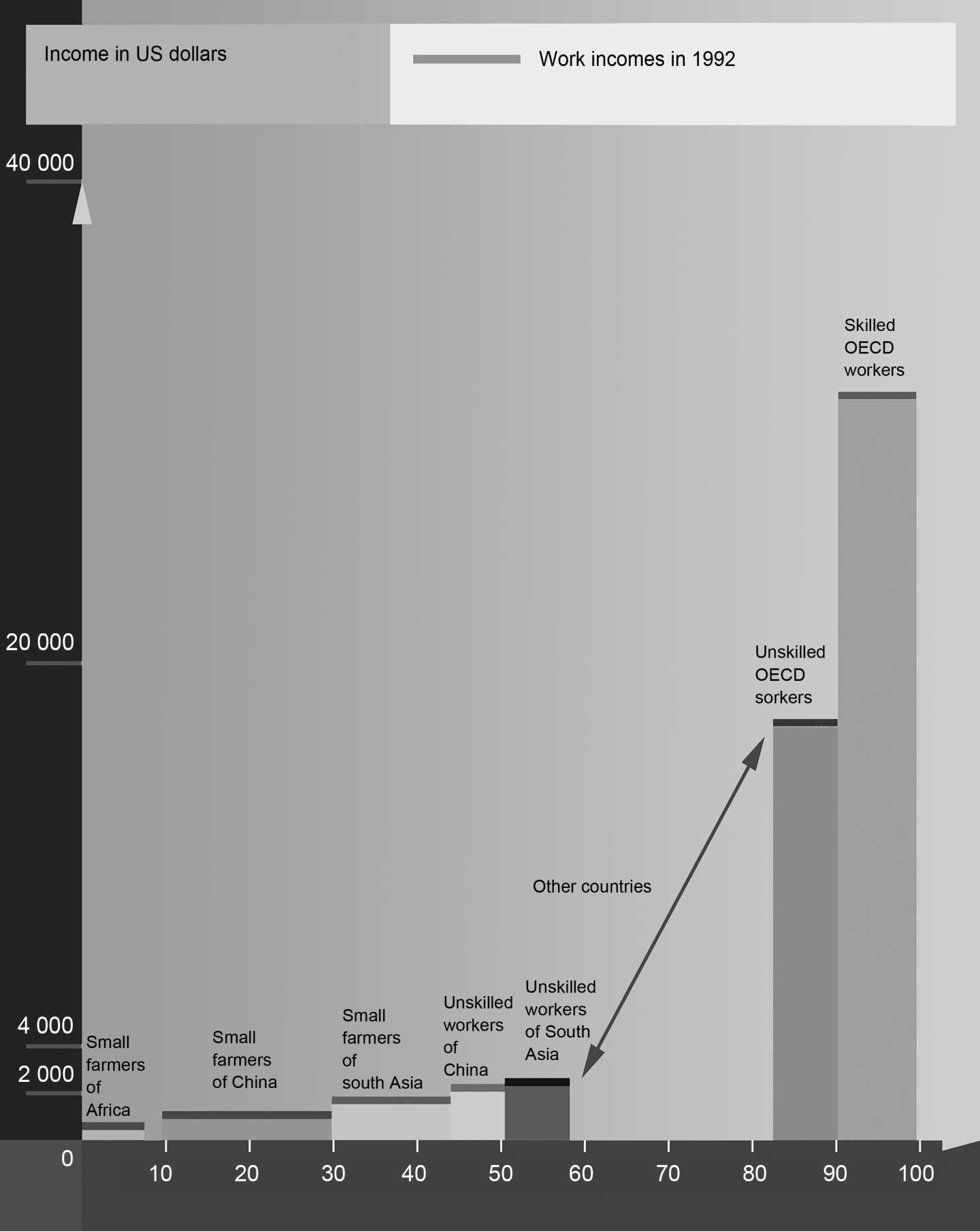
Figure 1-4. Small-scale farmer heterogeneity; access and market gap. Source: Huvio et al., 2004
in developing countries (see Mazoyer and Roudard, 1997; see Figure 1-5). In parallel, work incomes increased most in industrialized countries (Mazoyer, 2001) and prices of industrial manufactured goods generally increased relative to agricultural goods, adding to disparities due to differences between productivity levels.
Many small-scale systems have not been able to compete with industrialized production systems for a number of

Figure 1-5. Productivity in developing country cereal systems using motorized mechanization and chemicals and in those using manual or animal-drawn cultivation. Source: Mazoyer, 2001.
reasons, including subsidies given to farmers in industrialized countries, cheap fossil energy in mechanized systems compared to metabolic energy in small-scale systems, stabilized market prices in industrialized countries as opposed to completely liberalized prices in developing countries, and the inability to access inputs on favorable terms as compared to large-scale systems. Countries and communities based mainly on small-scale economies are the poorest in the world today, as well as the most threatened by ecosystem degradation (UNEP, 2002). Most small farms with a size of less than two hectares are in Asia (87%), followed by Africa (8%), Europe (4%) and America (1%) (Nagayets, 2005). While the trend in industrial countries has been an increase in average farm size (from about ten to more than 100 ha), it has been the opposite in densely populated developing countries (from about 2 to <1 ha). In some contexts small farm size may be a barrier to investment, however, small farms are often among the most productive in terms of output per unit of land and energy. As yet they are often ignored by formal AKST.
Historical trends suggest that small-scale farms will continue to dominate the agricultural landscape in the developing world, especially in Asia and Africa, at least for the coming two to three decades (Nagayets, 2005). The absolute number of small farms is still increasing in a number of countries on these continents, due to further subdivision of landholdings and expansion of agricultural land. This is also reflected in the labor force differences between countries (see Figure 1-6).

Figure 1-6. Labor force diversity and income circa 1992. Source: Mazoyer, 2001.